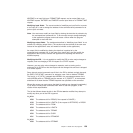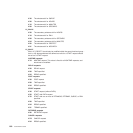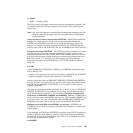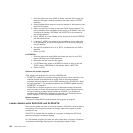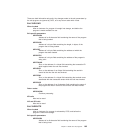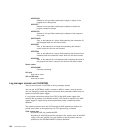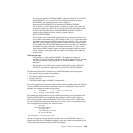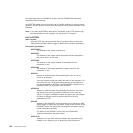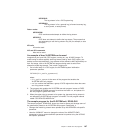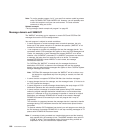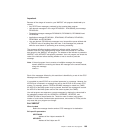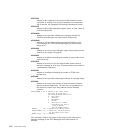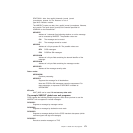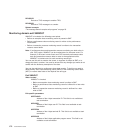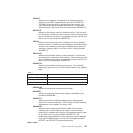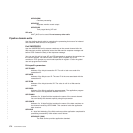UEPSYSLG
The log stream is for a CICS system log.
UEPGENLG
The log stream is for a general log (a forward recovery log,
a user journal, or auto-journal).
Return codes
UERCNORM
CICS continues and attempts to define the log stream.
UERCBYP
CICS does not attempt to define the log stream. The process that
was attempting to use the log stream may fail (for example, a data
set open).
XPI calls
All can be used.
API and SPI commands
Must not be used.
An example of how XLGSTRM can be used
Imagine that you have 200 CICS regions, running on, say, 20 MVS images. To
avoid having to define explicitly each log stream used by each CICS region, you
decide to use model definitions. Log streams will be defined to MVS dynamically on
their first usage, with an XLGSTRM exit program being used to select from
alternative model log streams. This is how it might work:
1. On an initial start of a CICS region, the INITPARM system intialization
parameter specifies:
INITPARM=(Exit_enabler_pgmname=nnn)
where:
v Exit_enabler_pgmname is the name of the program that enables the
XLGSTRM user exit program.
v nnn is a number that identifies a group of CICS regions that share the same
set of log stream models.
2. The program that enables the XLGSTRM user exit program issues an EXEC
CICS ASSIGN INITPARM command to retrieve the value nnn, and places it in
the exit program’s global work area.
3. When the region tries to connect to its system log, because the log stream is
not defined the XLGSTRM exit program is invoked. The exit program selects
model CICS.DFHLOG.MODELnnn.
The sample program for the XLGSTRM exit, DFH$LGLS
The sample program, DFH$LGLS, shows you how to access and change some of
the parameters passed to an XLGSTRM exit program. Specifically, it:
v Changes the model log stream name pointed to by the UEPMLSN exit-specific
parameter
v Uses the IXGINVNT macro to change the value of the HIGHOFFLOAD
parameter in the log stream definition parameter list pointed to by the UEPIXG
exit-specific parameter.
Chapter 1. Global user exit programs 167



